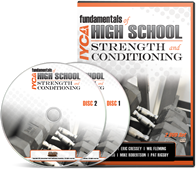
Long Term Training Principles.. Cont
Point #4 – Creative Inclusion
This applies to both sports and adjunct long term training…
We absolutely need to turn away from pre-planned, pre-organized drills with young kids.
Everything about sport and fitness should be based on experiential and experimental play – with the kids themselves leading the charge on ‘what’.
A simple way to look at this (and the relevance of it) is to review clinical data on human brain activity through a chronological spectrum.
Before the age of 5, more than 80% of a child’s thoughts are based on ‘creative daydreaming’ during which ‘free play’ results in an extraordinary ability to discover movement – rather than replicating it.
After the age of 7, the ‘creative daydreaming’ style of thinking drops to less than 20%.
Kids are being given less and less ability to explore, find and ‘understand’ movement efficiency on their own; and this truth is a major pre-cursor to why we find more and more young teenage athletes being capped in terms of ability. They simply lack the requisite experience and kinesthetic intelligence to accomplish or overcome more advanced motor skills.
Point #5 – Physical Affirmation
I have long maintained that there are several factors to being a quality Coach – most of which sit outside of your ability to understand movement and prescribe exercise.
Part of the IYCA’s “Art of Coaching” mantra discusses the importance of communication as it relates to young athlete buy in and long-term improvement.
Consider this:
Under the age of 2, the average number of ‘physical affirmations’ a boy receives is 12 per day.
After the age of 2, that number drops to below 4.
Never forget how important that pat on the back, high five or sincere hair-mussing-ata-boy is in terms of your young athletes feeling validated for a job well done.
Point #6 – Create Progressive Templates
The number of times I hear Coaches say “I don’t know what else to do” is becoming outrageous.
Programming and Long Term Training is both a science and art, but does require some background work from you – and not by merely printing off the latest ‘Sample Program’ you saw and using it as is.
Consider the skills you teach and create progressive templates that allow you to ascend those skills in an orderly fashion and through a developmental system that accounts for natural elements of human growth and development.
For example:
Balance =
- Self-Governed, Non-Manipulative
- Static, Manipulative
- Dynamic and Multiple Movements
Spatial Awareness =
- Static, Non-Manipulative
- Dynamic, Non-Manipulative
- Dynamic and Manipulative
- Specific
Rhythm =
- In Place
- Movement-Based
- Movement-Based and Implement-Based
Reaction =
- Acoustic
- Visual
- Kinesthetic
Fill in each of those categories with exercises that apply and find yourself with a developmental model that makes sense and is very easy to apply.
These are examples of my own progressive templates… Feel free to use them or create your own.
The Exact System I Use to Train High School Athletes… Eric Cressey and Mike Robertson Use It, Too…
–> https://iyca.org/highschool/
– Brian




Excellent post. I love the use of all senses in developing athletes. Getting kids,especially teenagers to even get out and play is a challenge in our society let alone the development of athletes. Keep up the great posts.
Right on, Brian! We can “argue” the finer points of which drills/exercises to use when, but the philosophy should always be Long Term Athletic Development. I’ve always said to parents that one of the jobs we have as youth fitness coaches and trainers is to be sure that when the “last whistle blows” for any athlete in their scholastic career, there’s a future left for them. It’s largely up to us to be sure they enter that future as functioning human beings with a healthy attitude toward exercise, health and fitness.
That being said, it’s also paramount for us to be sure they can perform at their best for as long as they choose to compete.
Keep up the great work, my friend!
very good ideas. very informative, i will be trying out some of those. The main idea is to reach the heart of the young athlete, them phase in proper technique and much fun.